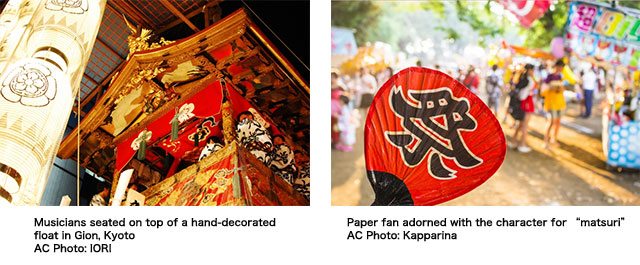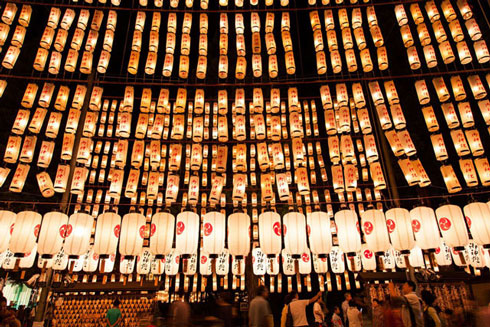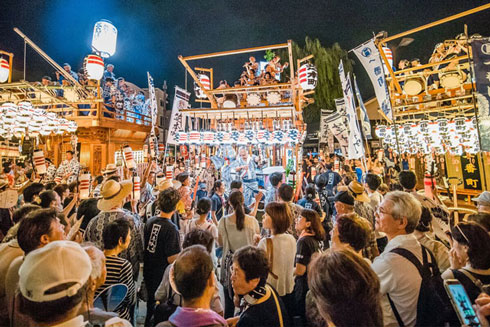News
August - Natsu-Matsuri: Summer Festivals Heat up the Archipelago Updated in August 2019
Despite the inhospitable weather in much of the country, summer in Japan is one of the most festive times of the year, with literally tens of thousands of summer festivals or natsu-matsuri (夏祭り) occurring in the high humidity of July and August.
So while you might be familiar with some of the images of typical local summer festivals, such as yukata, ramune soda and kakigōri, or taiko, o-mikoshi, and bon odori, we introduce you to a selection of festivals from around the country. Definitely add them to your must-see list when you come to Japan!
The first thing to know is, Japanese matsuri come in a wide variety of forms—from religious farming ceremonies to riverside fireworks competitions. In fact, even the word matsuri (祭り) has evolved over time. Originally coming from a Chinese character related to funerals, the verb matsuru (祭る) in modern Japanese means to worship, pray or pay respect to gods or ancestors. Formal religious rites from crop blessings, to welcoming of ancestral spirits, were usually accompanied by leisurely activities or entertainment for the young and old. Typical summer matsuri inherits and integrates all that fun spirit for the community and visitors. Some festivals include spectacular >parades to carry enshrined deities around town, fireworks, large teams of traditional dance and carnivals.

Popular summer matsuri that draw hundreds of thousands of people span the entire country. In the west, Osaka’s thousand-year-old Tenjin Matsuri (Jul 24-25) celebrates the kami, or god, of education with drumming, boats, and fireworks. In the north, the physically impressive Kantō Matsuri (Aug 3-6) in Akita celebrates rice harvests with performers using their shoulders, foreheads, and hips to balance 12-meter bamboo poles decorated with paper lanterns. And in Tokyo, around a million spectators gather annually to enjoy the Sumidagawa Fireworks Festival (last Saturday of July, weather-permitting), the world’s oldest fireworks festival, which has been celebrated on and off since the 1730s.
Or maybe you prefer less crowded events! The Hokkaido Heso (Belly Button) Matsuri (Jul 28-29) was created as recently as 1969 in the town of Furano, referred to because of its geography as “the belly button of Hokkaido”. It features dancers with painted bellies and umbrellas who compete for a cash prize. More traditionally, long whole tree trunks are pulled by ropes to be dedicated to the shrine in the Harano Hachimangū Matsuri (mid-July). Before offering the tree trunk to Shinto gods, people carry it around town while performing traditional dances.
Because of certain unique elements, there are also a few festivals that have been added to the UNESCO Intangible Cultural Heritage list. The Gion Matsuri (all of July) in Kyoto is one such matsuri, honored for its gigantic Yama and Hoko floats (Jul 17 & 24). The Nachi Fire Festival (Jul 14) in Wakayama Prefecture is another. In this matsuri, twelve 50-kilogram torches are set ablaze and carried from Kumano Nachi Shrine to the 133-meter Nachi Falls, the largest waterfall in Japan.
We’ve barely scratched the surface of the ways to celebrate the summer in Japan. We haven’t even mentioned the rowdy Awa Odori Dance Festival (Aug 12-15) of Tokushima, Okinawa Zentō Eisā Festival (Aug 23-25) featuring drum and dance parades, or the vibrant Nebuta Festival (Aug 2-7) of Aomori. With a limitless selection of celebrations happening across the country in July and August, the only question is how much time you have to enjoy the festivities! But if you don’t have time to travel, you can still get the festive feel at the local shrine.

(CC BY-ND 2.0)

(CC BY-NC-SA 2.0)







